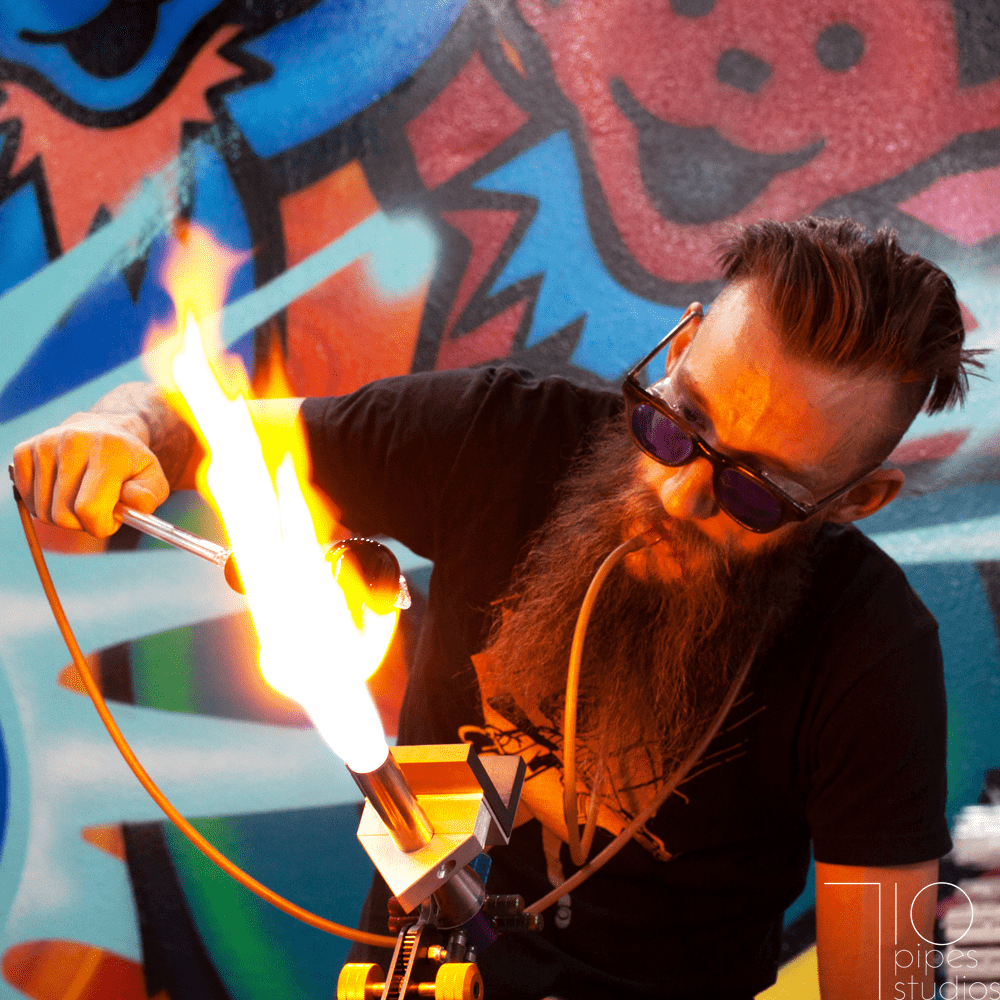
Glass blowing is, and always will be, considered a true art form. Glass is an incredibly versatile material, and can be formed for nearly any function imaginable– especially when in the hands of an experienced glass blower. For a beginner, learning the terminology is usually task #1 to becoming a reputable artist. Read more below for a rundown from our smoke shop team on all of the terms you need to know!
Glossary of Terms
Annealing
- This is the process of using heat to to release the pressure and strain placed on the glass during the forming and shaping process.
Blow Hose
- A neoprene or silicone hose attached to a swivel on one end, and a mouthpiece on the other. This is used to allow the glassblower to blow into the glass tube while he works the glass over a flame.
Casing
- The practice of layering one color of glass tubing over another, usually clear over color.
Didymium
- A type of glass lens with a specialized violet hue to filter out harmful rays of light emitted by glass when heated to the extreme temperatures required to melt and shape the glass.
Fuming
- A technique used by many talented glassblowers, fuming is the act of heating metals such as gold or silver to vaporize and release fumes while in the flame. When a glass piece is held slightly behind the metals, the fumes settle onto the cooler glass surface and create beautiful colors.
Graphite
- Carbon in a near-natural crystalline form. This is commonly shaped into tools used for glassblowing, due to carbons natural heat-resistant and anti-stick properties.
Hard Glass
- This is a common moniker for Borosilicate Glass, commonly used in glassblowing– especially for functional art, such as dab rigs and pipes.
Kiln
- This is basically a super-heated oven. Often reaching temperatures of up to 1,500 degrees Fahrenheit, these ovens are used to gently cool glass over time after it has been formed over a flame. The prolonged, gradual cooling process keeps fragile glass from cracking due to quick temperature drops.
Lathe
- A tool that some glassblowers consider essential, a lathe spins glass tubing at a consistent rate, and keeps the glass perfectly aligned. Using a lathe also frees up the artists hands while spinning.
Melting Point
- The temperature at which glass starts to transform from a solid to a liquid, allowing an artist to form and shape the glass.
Oxidizing
- An atmosphere at contains high amounts of oxygen and low amounts of un-combusted gases can affect colored glass, especially colors that contain metallic fumes or oxides.
Punti
- A glass rod connected to the piece being worked to provide a handle while the piece is being made. This piece provides extra stability, and is broken off towards the end of the forming process.
Reamer
- A graphite tool used by the glassblower for forming holes and other shapes while forming the piece.
Sodium Flare
- A bright flame or “flash” resulting from the reaction between the oxygen-rich flame from the torch, and sodium on the surface of the glass tubing.
Thermal Shock
- The strain created from cooling or heating a piece of worked glass too quickly, usually resulting in a crack or break.
Vermiculite
- A material used to insulate heat and prevent worked glass from cooling too quickly. This material is normally used in between flame working and the kiln.
Wig Wag
- A technique of blowing glass where the artists slowly twists line-worked tubing in one direction with one hand, and the opposite direction with the other. This tube is then condensed, and blown back out to reveal the design created.

